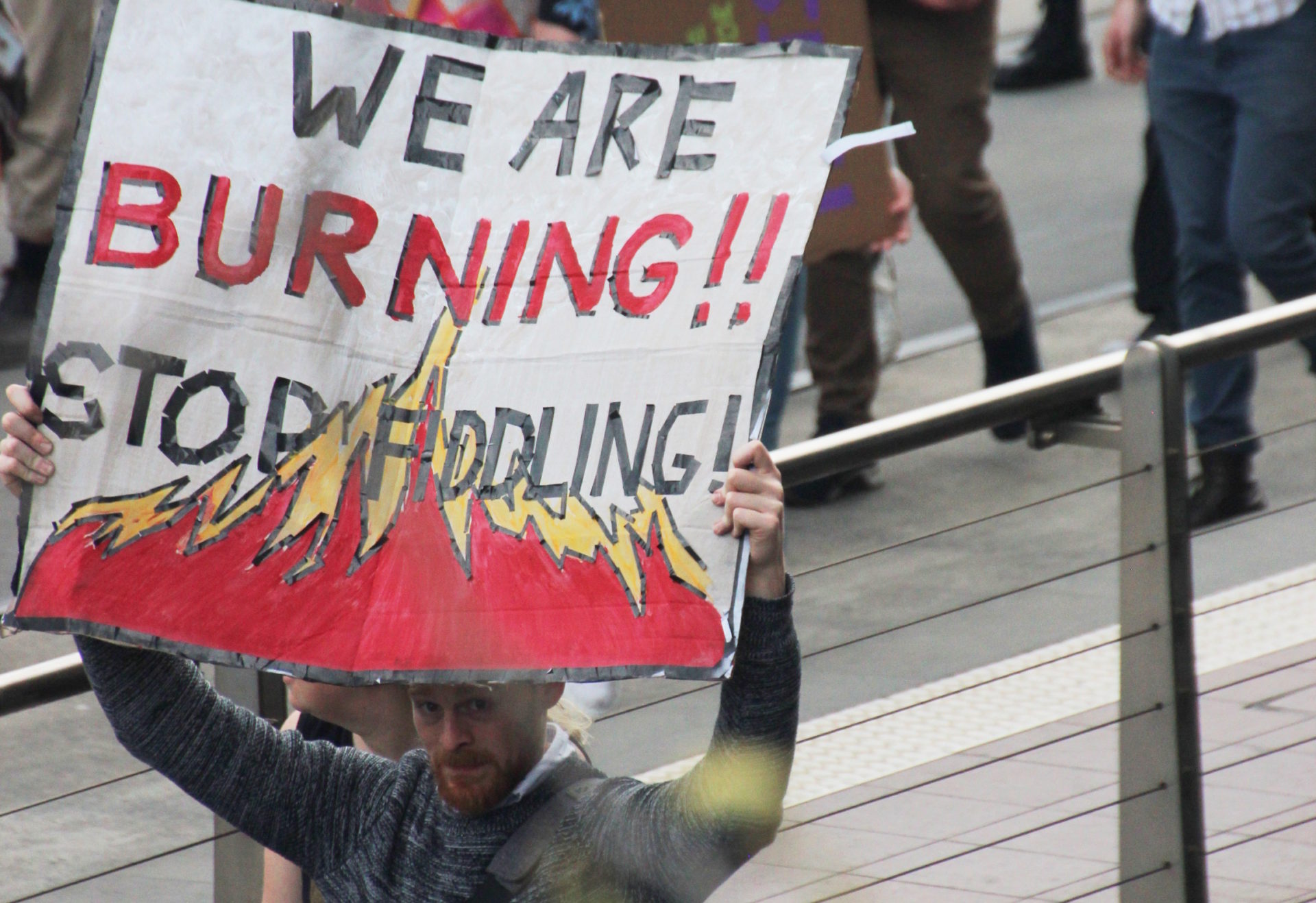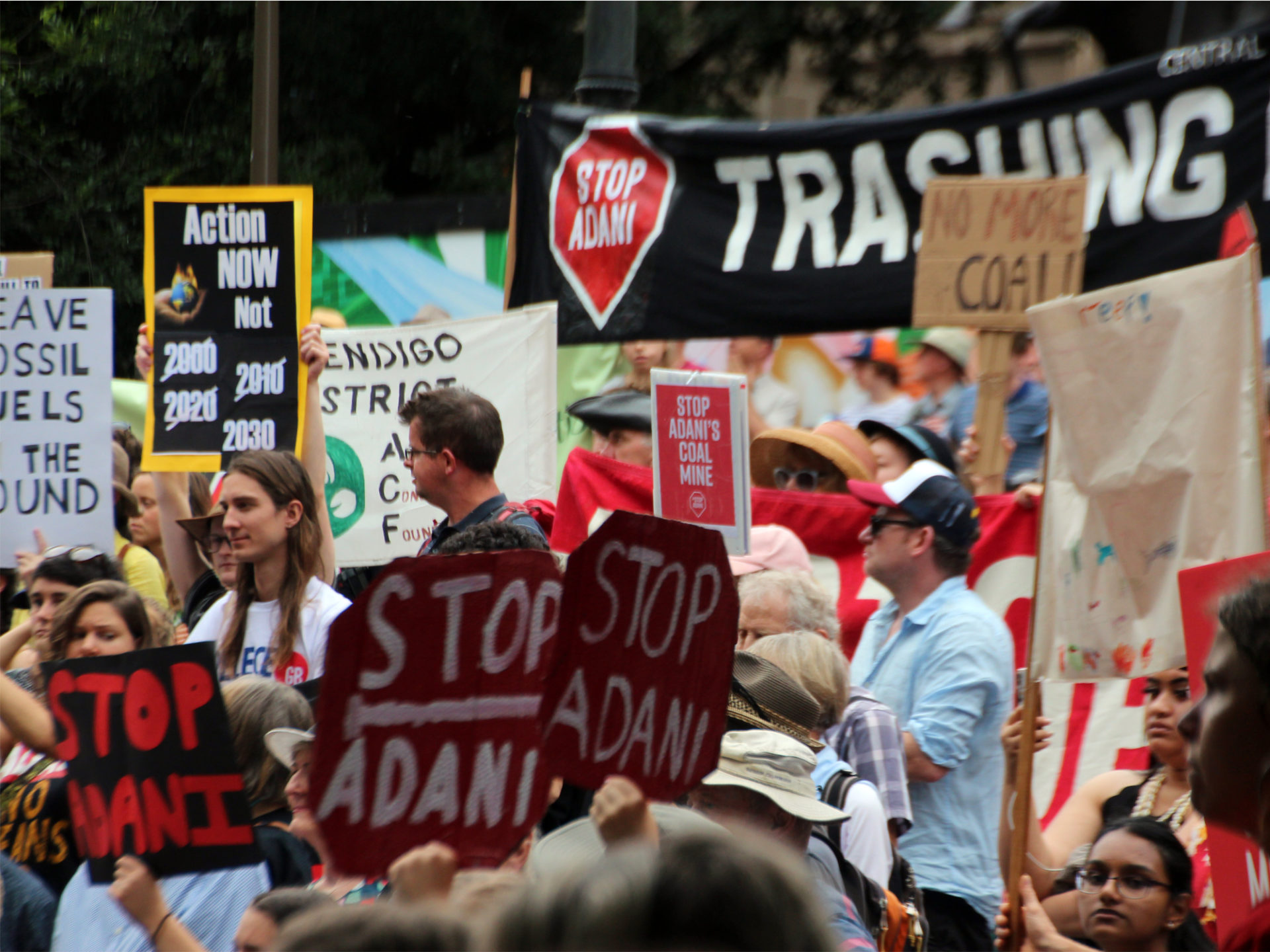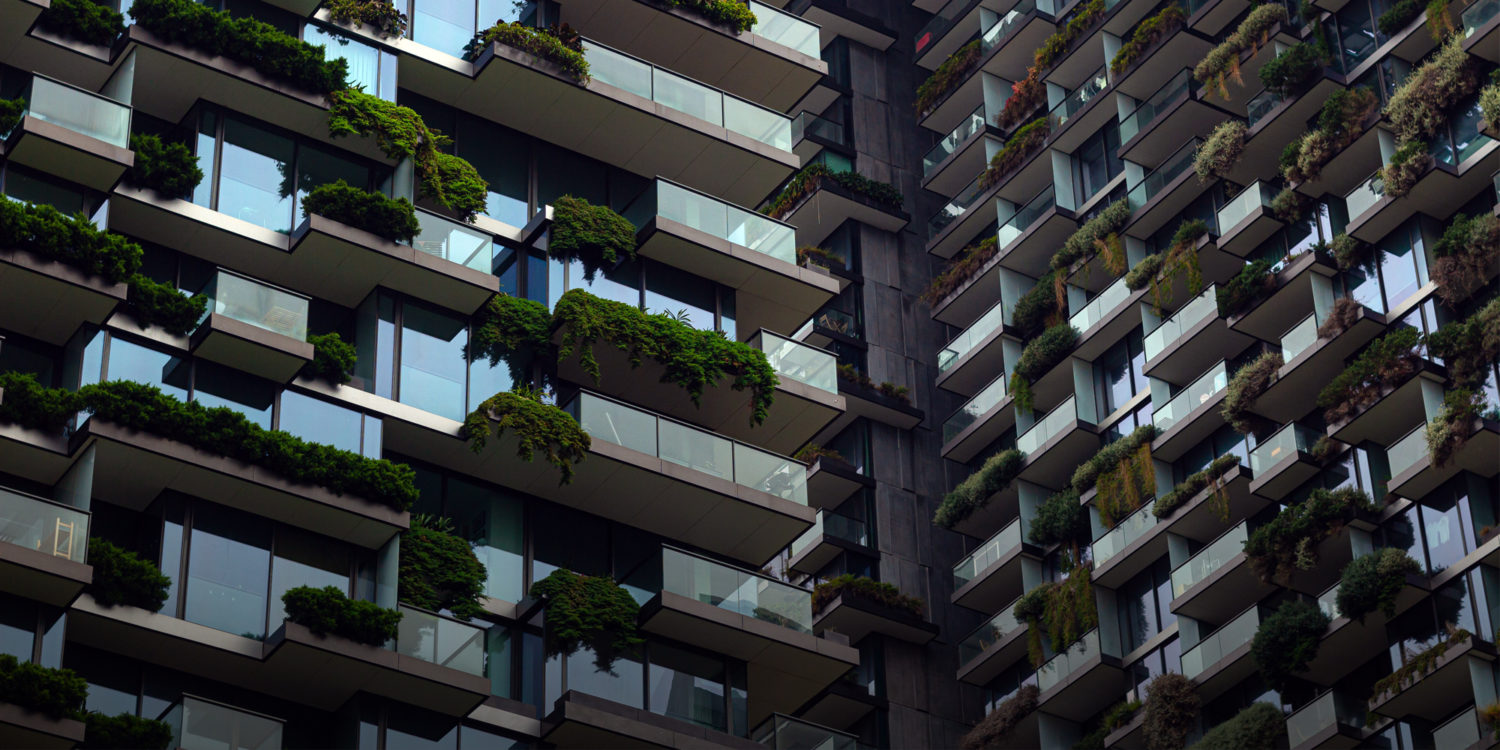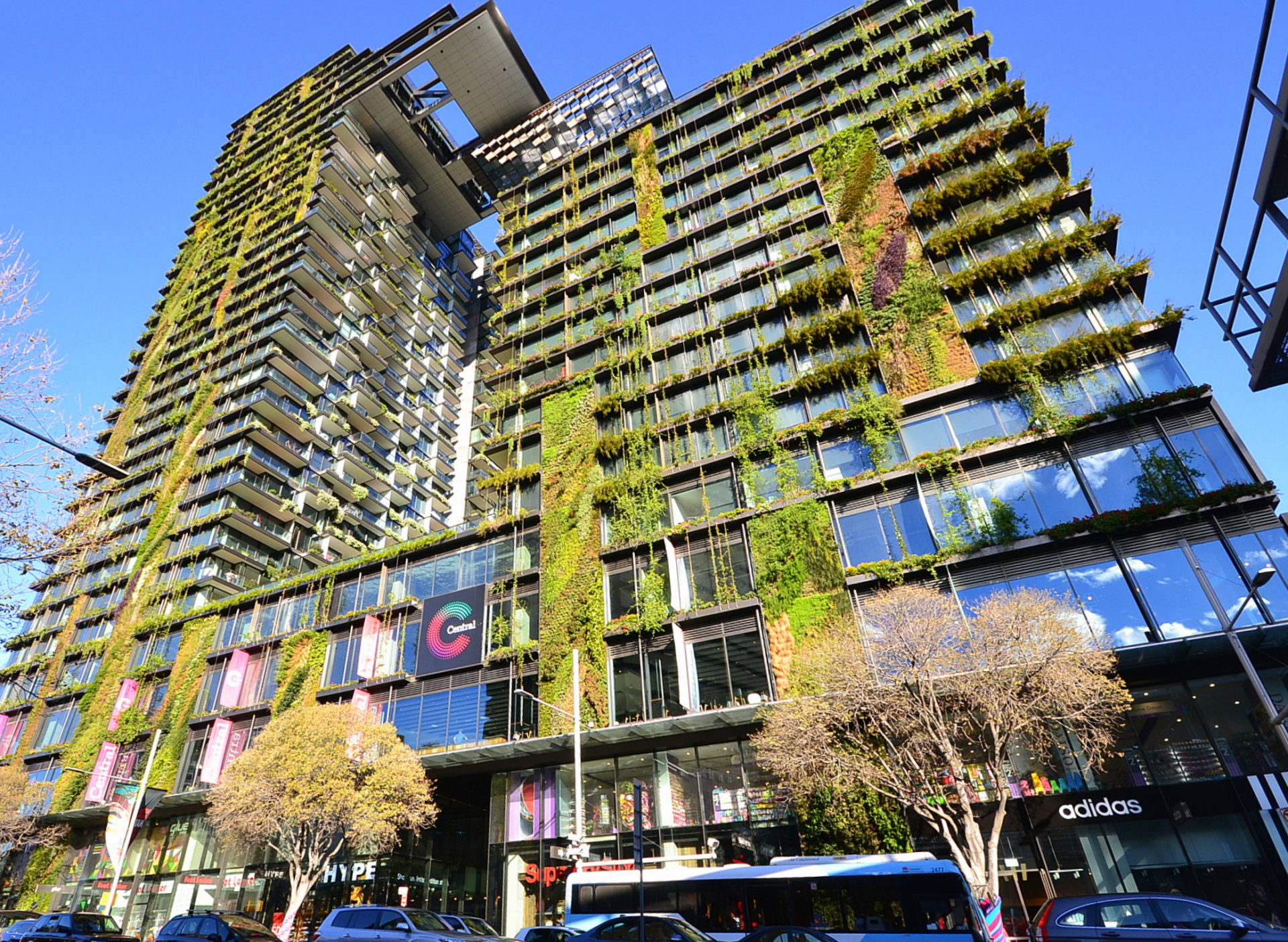In Elvia Wilk’s 2019 novel Oval, the protagonist Anja lives in an eco-settlement named ‘The Berg.’ Located in ‘future-adjacent’ Berlin, the settlement is part of an attempt to ‘re-nature’ the city, through the construction of an artificial mountain on the site of the Tempelhof airfield, currently one of the largest undeveloped public spaces in Europe. But the sustainable living village turns out to be a greenwashing gentrification project controlled by a tech megacorporation, who are buying up the city for profit. As Anja looks over the city, she observes the green glow of newly upgraded solar-powered lamps wallpapering the street, ‘A taste test for the city, a sample of the sustainable colour all of Berlin would soon be.’ Wilk exposes the potential of low-carbon developments to perform as a facade, concealing both the financial interests which drive development and the increasing inequality in the built environment.
Such problems of eco-gentrification and greenwashing are not restricted to this particular genre of “cli-fi literature”. Rather, they might also be given the potential to proliferate in ethically focused contemporary architecture practices, many of whom have found common cause in the global Architect’s Declare movement. Initiated in the UK in 2019 by 17 founding members, Architects Declare aims to encourage architects to make essential interventions in the climate emergency. In July of that year, Australia became the third country to develop an outpost of the movement, initially with 30 signatories. Within a week, 409 more firms had added their signatures to the list and by November, 666 practices had signed the Australian declaration.
The Australian movement’s founding document follows the structure and key aims of the inaugural UK version, opening with an acknowledgement of the building industry’s responsibility for nearly 40% of energy-related carbon dioxide emissions, and addressing the double concern of climate breakdown and biodiversity loss. Yet, despite its ambitious and important proposals, the document also leaves open the possibility for Wilk’s creeping green glow to obscure necessary whole-of-system changes, through a focus on eco-materials rather than project financing and real estate capitalism.
As its authors explain in one section, ‘for everyone working in the construction industry [to meet] the needs of society without breaching the earth’s ecological boundaries will demand a paradigm shift’. The ‘research and technology exist for us to begin that transformation now,’ it says ‘but what has been lacking is collective will.’ This paradigm shift is primarily focused on low embodied carbon materials, adaptive reuse of buildings, life cycle costing, and collaboration with engineers, contracts and clients to reduce construction waste. The statement situates this approach within a need to ‘raise awareness’ of the climate crisis, and to ‘evaluate all new projects against the aspiration to contribute positively to mitigating climate breakdown’. Which is to say, the focus is predominantly on materials.
This is not to undermine the importance of the Architects Declare movement, which offers practical solutions for lowering the industry’s immense CO2 emissions, in both the construction process and operation cost of buildings. The movement has also moved beyond abstract ideas to tangible outcomes, illustrated in January 2020 when a group of architects united under the Architects Declare umbrella set out ambitious plans to become carbon neutral by the end of the year. However, while a shift to low embodied carbon construction is essential for designing the future, the focus on the physical fails to recognise that buildings have – to some extent – transcended the material.
Sociologist Saskia Sassen has explained that ‘we tend to think that a building is a building is a building. Well – not necessarily! If you have transformed it via 16 really complex steps into something else, the building is there, but its real function is invisible to our eyes.’ Sassen’s comments, which she elaborates on in her 2014 book Expulsions, point to the fact that buildings have become increasingly financialised, with houses, in particular, transforming from primarily serving as a shelter and a home for people into a place to realise value. In the book, Sassen traces the complex and often obscured links and legal instruments in this process of displacement, arguing that this shift from home to investment exacerbates inequality, where an influx of real estate investment to an area can displace, eradicate and expel communities.

Melbourne Climate Strike, 20 September 2019
John Englart/Flickr
This global network of housing financialisation and the complex systems of slow urban violence are beyond the responsibility or control of an individual Australian architecture firm. The majority of the signatories to the Architects Declare statement are small firms, with staff experiencing personal financial precarity and limited agency to realise the statement’s aim to ‘evaluate all new projects against the aspiration to contribute positively to mitigating climate breakdown, and encourage all clients to adopt this approach.’ In Australia, less than 3% of housing is designed by architects, and multi-residential developments are largely dictated by developers to maximise profit, allowing limited agency for architects to intervene after the initial schematic design process. Individual firms are developing innovative alternative investment models, and the Architects Declare is significant in identifying and promoting ways in which architects can work to mitigate climate crisis — but the material solutionism available to architects is unable to address some of the key drivers of climate disaster.
The tension between growth-driven development and compliance with the highest eco-ratings is well illustrated in the Barangaroo South development on Sydney’s waterfront. In 2019, this development won the WorldGBC regional Sustainable Design & Performance Leadership Award, as part of a program that celebrates green buildings that drive change and contribute to a better future. The project was developed by Australian construction, property and infrastructure company Lendlease, whose website highlights their commitment to sustainability by focusing on ‘1. Sustainable economic growth. 2. Vibrant and resilient communities and cities. 3. Healthy planet and people.’ Barangaroo South was celebrated for its on-site recycled water treatment plants, use of LED lamps and raising of the ground plane to accommodate predicted sea level rises.
Barangaroo is Sydney’s biggest redevelopment project, on a post-industrial docklands area. The site was flagged for development in 2006, with a government provision for ensuring 50% public parkland, a split of 75% commercial and 25% residential use in the non-public zones, and a 14km public access walk along the Sydney foreshore. As the project advanced, it became highly contentious as the masterplan was subjected to eight stages of modifications, where residential zoning increased to 30.2% and the overall gross floor area (apartments, office space, retail) increased by 51.6%. The public park no longer offers waterfront access along the foreshore, and the site was rezoned to allow billionaire James Packer a license to develop a 275 meter tall casino.
Lendlease is also connected with the $5 trillion investment management fund BlackRock Group, which is listed as holding 5.01% of Lendlease shares. In addition to being the biggest landlord in the world and being accused of undertaking ‘aggressive evictions’, BlackRock has over $87bn of shares in oil, coal and gas companies. The Vanguard Group holds 6.01% of Lendlease’s issued capital, and have a fossil fuel portfolio fund of $161.11bn. The Guardian found that BlackRock and Vanguard opposed or abstained from more than 80% of climate-related motions at FTSE 100 and S&P 500 fossil fuel companies between 2015 and 2019.
The Architects Declare commitments advance significant improvements to design practices, carbon reduced materials, and collaborative approaches to minimising waste — but currently do not intersect with the broader context in which architecture is procured, funded, built and sold. As Elvia Wilk states ‘the fact that some Amazon workers forgot to recycle their coffee cups this morning is not the problem — Amazon’s top-down state of overproduction, waste and exploitation is the problem.’ Comparably, the use of concrete on a suburban renovation is not ‘the problem.’ ‘The problem’ is the commodification of housing, that has reframed a home as an asset and a means to convert excess capital into…greater excess capital. ‘The problem’ as David Madden, Associate Professor in Sociology at LSE tweeted is that ‘real estate capitalism fuels the climate crisis‘.
In his Harvard lecture ‘Abstract from the Concrete’, geographer David Harvey opened by discussing the exponential rise in concrete consumption in China. He begins with the physical material, and traces the local urbanisation through to the fluidity of global speculative trading. What is limiting the efficacy of the Architects Declare statement is a clear connection between the abstract and the concrete: an acknowledgement that the ‘abstract’ of project financing has material impacts on the environment. The 50 million homes currently empty in China are an environmental and social disaster, regardless of the environmental rating of the concrete that was used to construct them.

Stop Adani Protest
John Englart/Flickr
The potential for architects to pursue both climate justice and spatial justice is introduced in alternative international architectural declarations, such as The Architecture Lobby’s Statement on the Green New Deal. This document proposes that meaningful declarations from architects need to move beyond a focus on eco-friendly materials, arguing that ‘design is only one form of agency. Activism and refusal are architectural acts as well.’ It also encourages architects to participate in civic processes and policy development, and to embrace decarbonization as a social justice issue. Overall, the organisation is explicit in articulating that ‘there can be no sustainable world without sustainable labour practices.’
Within Australia, the ‘declare’ movement has been influential in stimulating further declarations in other built environment industries. In August 2019, the Australian Institute of Landscape Architecture made their own declaration, which situates the profession within a broader context of social, financial and cultural activities — beyond the materiality of specific projects. The eight part statement takes a beyond-built-outcomes approach to responsibility towards climate justice.
Meanwhile, in October, the Australian Engineers Declare movement made headlines for their pledge to move away from fossil fuel projects, including a commitment to boycott working on the controversial Adani Carmichael coal mine in Queensland. As well as destroying ancestral lands, this project is set to exploit 270 billion litres of free groundwater, and add 4.6 billion tonnes of carbon pollution to the atmosphere. In this spirit, the engineers declaration commits to minimising wasteful use of resources and encouraging the specification of low embodied carbon materials. It also states that signatories will seek to ‘advocate for and undertake 21st century economic assessments that take a whole-of-system, whole-of-life approach, and take into account the implications of expanding beyond ecological ceilings and failing to meet fundamental human rights and social justice obligations.’

Wildfires are pictured surrounding Sydney, Australia, as the International Space Station orbited 269 miles above the Tasman Sea.
NASA Johnson/Flickr
This ‘whole-of-system’ approach is increasingly being recognised as essential to architectural practice, especially because it connects extractive relationships towards land and people with multiple and intersecting forms of inequality. The need to link climate crisis with the conditions that have created and exacerbated it was illustrated in the devastating bushfires which swept across Australia from November 2019 to February 2020, burning over 18 million hectares, destroying over 2600 homes, killing 33 people and an estimated 1 billion animals. The Australian Government has committed a $2bn dollar package for bushfire relief, while simultaneously subsidising the Adani coal mine with a $4.4bn relief package over the next 30 years. In the ongoing aftermath, the city of Sydney is shrouded in a milky red haze of smoke, as ashy waves leave black tide-lines on the beach.
As these devastating events remind us, reducing the energy-related carbon dioxide of the building and construction industry is essential, and the intent of the Architects Declare movement is important and powerful. But as Wilk’s novel warned, the current development model can too easily take advantage of that green glow of solar panels to illuminate and sustain the growth of investment portfolios. In these early moments of the Architects Declare movement, there is still a lot of space to move beyond a focus on the low-carbon materials of building, to acknowledge the tangible reality of the construction process, and make a concrete strategy to deal with the causes, as well as symptoms of the climate crisis. In the words of the Arch Lobby NYC, in response to the Engineers Declare movement… ‘Architects, your turn.’

